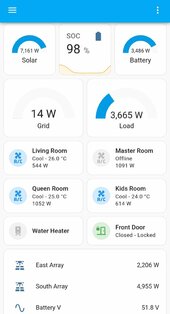I have 20 solar panels (400W each, total 8kW) with 2.4kW facing east (6 panels in series) and 5.6kW facing south (7 panels in series, 2 strings in parallel) connected to a Deye 8k inverter.
**Panel Specs:**
- **Model:** CanadianSolar CS1U-400
- **Voc:** 53.4 V
- **Isc:** 9.60 A
- **Vmp:** 44.1 V
- **Imp:** 9.08 A
These panels were installed three years ago. I'm not sure if this is an issue, but my south-facing array isn’t performing as well as the east-facing array. There is a bit of shading on the south array in the morning, which you'll see in the pictures. This has always been the case, but I thought it might be due to the panels getting warmer throughout the day.
Additionally, I would like to add more panels, as my load regularly hits 60kWh or more, while the panels max out at 40kWh on most days. I'll attach pictures of the panels and data from Home Assistant showing the panel performance on 05/18/2024.
PV1 is east and PV2 is south.
**Panel Specs:**
- **Model:** CanadianSolar CS1U-400
- **Voc:** 53.4 V
- **Isc:** 9.60 A
- **Vmp:** 44.1 V
- **Imp:** 9.08 A
These panels were installed three years ago. I'm not sure if this is an issue, but my south-facing array isn’t performing as well as the east-facing array. There is a bit of shading on the south array in the morning, which you'll see in the pictures. This has always been the case, but I thought it might be due to the panels getting warmer throughout the day.
Additionally, I would like to add more panels, as my load regularly hits 60kWh or more, while the panels max out at 40kWh on most days. I'll attach pictures of the panels and data from Home Assistant showing the panel performance on 05/18/2024.
PV1 is east and PV2 is south.
Attachments
-
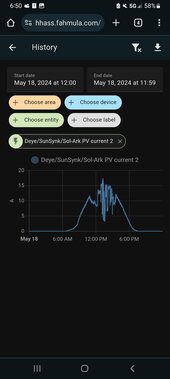 Screenshot_20240519_185032_Chrome.jpg47.8 KB · Views: 19
Screenshot_20240519_185032_Chrome.jpg47.8 KB · Views: 19 -
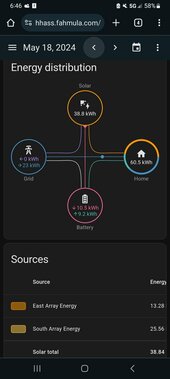 Screenshot_20240519_184625_Chrome.jpg49.3 KB · Views: 17
Screenshot_20240519_184625_Chrome.jpg49.3 KB · Views: 17 -
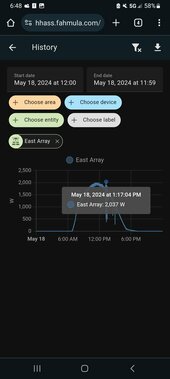 Screenshot_20240519_184812_Chrome.jpg47.1 KB · Views: 14
Screenshot_20240519_184812_Chrome.jpg47.1 KB · Views: 14 -
 Screenshot_20240519_184816_Chrome.jpg44.6 KB · Views: 13
Screenshot_20240519_184816_Chrome.jpg44.6 KB · Views: 13 -
 Screenshot_20240519_184839_Chrome.jpg45.5 KB · Views: 12
Screenshot_20240519_184839_Chrome.jpg45.5 KB · Views: 12 -
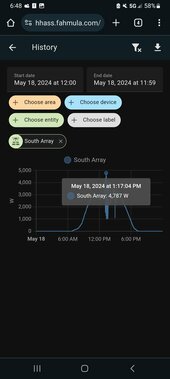 Screenshot_20240519_184849_Chrome.jpg47.5 KB · Views: 12
Screenshot_20240519_184849_Chrome.jpg47.5 KB · Views: 12 -
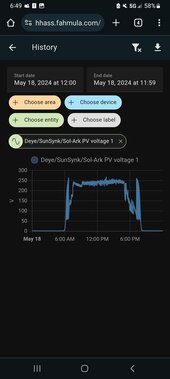 Screenshot_20240519_184925_Chrome.jpg49.7 KB · Views: 10
Screenshot_20240519_184925_Chrome.jpg49.7 KB · Views: 10 -
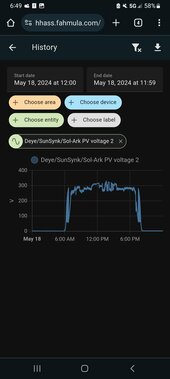 Screenshot_20240519_184953_Chrome.jpg48.3 KB · Views: 8
Screenshot_20240519_184953_Chrome.jpg48.3 KB · Views: 8 -
 Screenshot_20240519_185012_Chrome.jpg47.8 KB · Views: 11
Screenshot_20240519_185012_Chrome.jpg47.8 KB · Views: 11 -
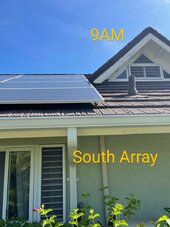 IMG_5475~2.jpg147.7 KB · Views: 15
IMG_5475~2.jpg147.7 KB · Views: 15 -
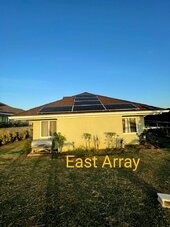 IMG_1384~2.jpg207.6 KB · Views: 16
IMG_1384~2.jpg207.6 KB · Views: 16 -
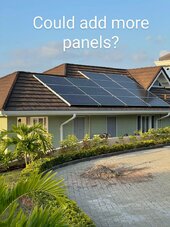 IMG_1478~2.jpg235.6 KB · Views: 16
IMG_1478~2.jpg235.6 KB · Views: 16 -
 IMG_5472~2.jpg225.9 KB · Views: 18
IMG_5472~2.jpg225.9 KB · Views: 18







